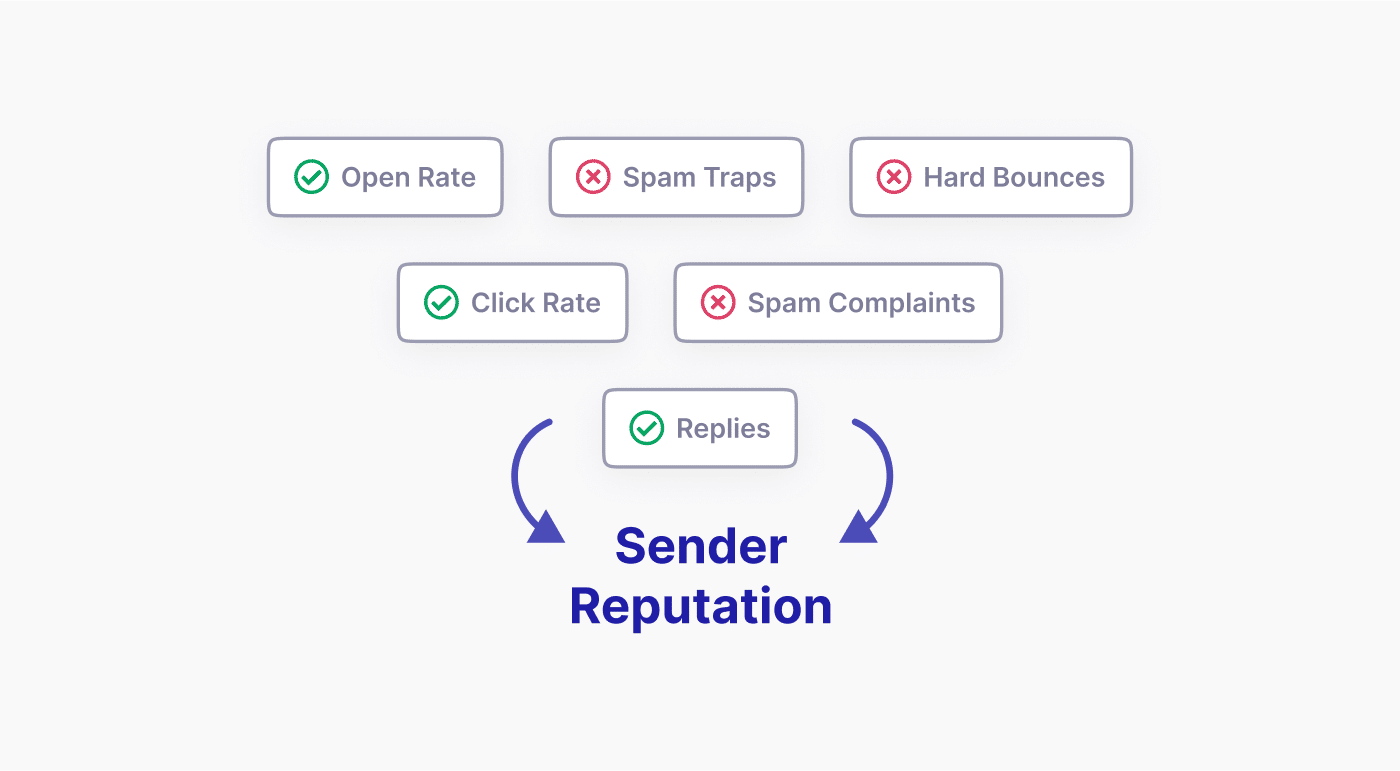At SendLayer, we offer a suppression list to help protect your domain reputation. But you may be wondering what is a suppression list exactly? And how does it work to prevent your sending domain from getting a low reputation score or being put on a blacklist?
In this post, I’ll explain exactly what a suppression list is, how it works, and why it’s essential if you want to maintain a good sender reputation.
What Is an Email Suppression List?
An email suppression list is a list of email addresses that you don’t want to send emails to.
This may be because emails have hard bounced back when you’ve tried to message them in the past, because they’ve unsubscribed from your list, or because they’ve reported your emails as spam in the past.
Checking email addresses are not on your suppression list before you send an email to them ensures that you’re not contacting invalid email addresses or anyone who doesn’t want to receive communication from you.
The main categories of email addresses that typically end up on suppression lists include:
- Hard Bounces – These are permanent delivery failures, often because the email address no longer exists or was typed incorrectly. SendLayer automatically adds these to your suppression list to prevent repeated failed delivery attempts.
- Unsubscribes – When recipients opt out of your emails, their addresses are automatically added to prevent accidental future sends. This helps maintain compliance with anti-spam laws like CAN-SPAM.
- Spam Complaints – If someone marks your email as spam, their address is added to protect your sender reputation. Even if they later change their mind, it’s best practice to keep these addresses suppressed.
- Invalid Addresses – These include improperly formatted emails or known spam traps that could harm your deliverability if you continue trying to send to them.
How Does a Suppression List Work?
Different email platforms handle suppression lists in different ways. Some email service providers automatically add addresses to your suppression list when emails bounce or recipients unsubscribe, while others allow you to manually manage your list.
At SendLayer, we maintain both automatic and manual suppression capabilities to give you maximum control over your email sending.

SendLayer automatically adds addresses to your suppression list if they result in a hard bounce, if a recipient unsubscribes, or if they submit a spam complaint. This prevents you from accidentally sending emails to addresses that could hurt your domain’s sending reputation.
When sending email, every email address is checked against your suppression list. If it’s on the suppression list, the email will not be sent to that recipient.
Why Are Suppression Lists Important?
A suppression list is essential for any business sending emails, and there are several compelling reasons why.
Most importantly, it protects your sending reputation. Email providers like Gmail and Yahoo carefully watch how people interact with your emails. When you keep sending messages to addresses that bounce or to people who mark you as spam, these providers start to lose trust in you. Over time, this means fewer of your emails will reach the inbox, and more will land in spam folders.

By only sending emails to people who actually want to receive them, you build trust with email providers. This means more of your messages will successfully reach your subscribers’ inboxes.
There’s also a practical financial benefit to maintaining a good suppression list. Most email platforms charge based on how many emails you send, not how many actually get delivered. By removing addresses that bounce or have unsubscribed, you avoid paying for emails that would never reach their destination anyway.
Lastly, using a suppression list helps keep you compliant with email laws. When someone unsubscribes from your emails, you’re legally required to stop sending to them (this is covered in the CAN-SPAM Act). Your suppression list automatically prevents you from accidentally emailing these addresses again, keeping you on the right side of anti-spam laws and protecting your business from potential fines.
Suppression Lists for Transactional Email
While suppression lists are often associated with marketing emails, they’re equally important for transactional messages.
When a user’s email address bounces or they mark even a password reset email as spam, it’s crucial to suppress that address to protect your domain’s sending reputation. This ensures your system notifications and critical user communications continue to deliver reliably.
A well-maintained suppression list helps ensure your transactional emails reach your users when they need them.
Whether it’s password resets, security alerts, or system notifications, protecting your sending reputation through proper suppression management is crucial for any business relying on automated email communication.
That’s it! Now you know what an email suppression list is
Next, would you like to learn about the difference between different sending methods? Check out our tutorial on SMTP vs API for more information.
